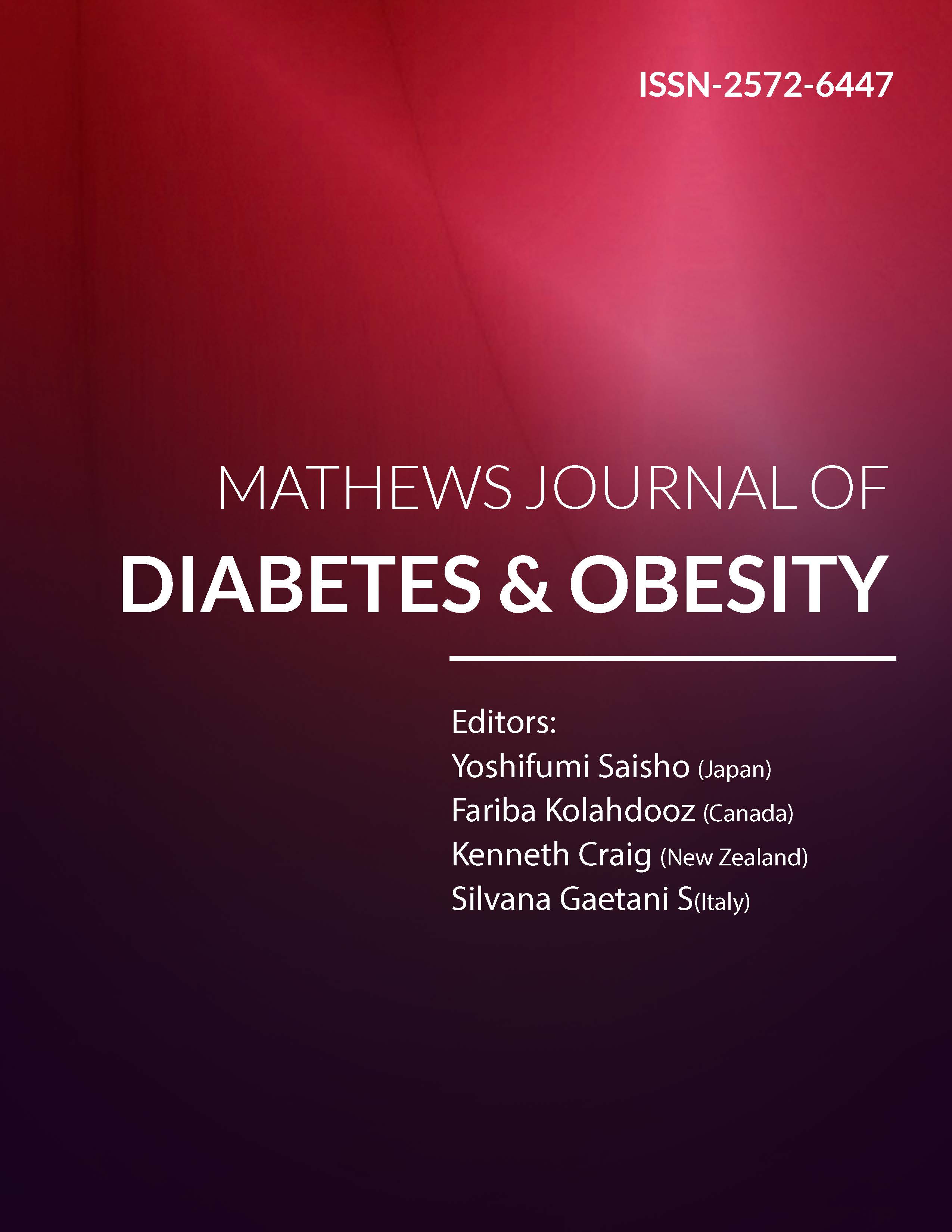
Information Links
Previous Issues Volume 6, Issue 1 - 2023
Leptin Level in Patients with Type 2 Diabetes as a Risk Factor for Cardiovascular Disease
Nahla Ahmed Mohammed Abderahman1,*, Mohammed Ahmed Ibrahim Ahmed2
1Assistant professor of Biochemistry, Faculty of Medicine, Department of Biochemistry, Nile Valley University- Atbara, Sudan
2Assistant professor of Microbiology, Faculty of Medicine, Department of Microbiology, MBBS Bachelor of Medicine and Surgery Nile Valley University- Atbara, Sudan
*Corresponding author: Dr. Nahla Ahmed Mohammed Abdurrahman, Assistant professor of Biochemistry, Nile Valley University, Faculty of Medicine- Atbara, Sudan; Tel: +249123590647; E-mail: [email protected]
Received Date: February 17 2023
Publication Date: April 18 2023
Citation: Abderahman NAM, et al. (2023). Leptin Level in Patients with Type 2 Diabetes as a Risk Factor for Cardiovascular Disease. Mathews J Diabetes Obes. 6(1):17.
Copyright: Abderahman NAM, et al. © (2023)
ABSTRACT
Leptin Level Background: Investigating adipocytokine leptin (Lep) levels in type 2 diabetes mellitus (T2DM) and their association with 6 anthropometry, lipid profile parameters could lead to understanding the role of Lep in T2DM and related risk of cardiovascular complications; Moreover, could further help prevention and management of these complications. Aim: The current study's objectives are to examine the association between blood levels of adipocytokine leptin (Lep) and the risk of metabolic syndrome and cardiovascular disease in Sudanese patients with T2DM. Materials and method: During the period of April 2012 and March 2013, a case-control study was conducted in Central Sudan. The study involved 300 participants who met the inclusion criteria and were divided equally into diabetes, diabetic hypertension (HTN), and non-diabetic non hypertensive (NDNH) groups to estimate FPG, HbA1C, lipid profile levels of total cholesterol (TC), high density lipoprotein cholesterol (HDL-C), low density lipoprotein cholesterol (LDL-C), and triglycerides (TG) and, Lep. A questionnaire was completed, which included personal, clinical and anthropometric data beside biochemical measurements. Each respondent gave verbal consent and venous blood was drawn after an overnight fast. The statistical analysis was done with the help of statistical software for social sciences (SPSS version 16, Chicago, IL, USA). Results: Women represented 74% and men were 26%. Diabetic hypertensive group include the oldest participant who's their age ranged from 40-65 years and had the highest body weight 80.28kg, WC 104.14cm, BMI 31.65, SBP 128.10 mmHg and DBP 81.40mmHg. Diabetic and diabetic hypertensive had significant (p<0.0001) high mean level of FPG (215.33±9.93 mg/dl, and 164.63±6.65 mg/dl respectively). HbA1C mean concentration (8.32±0.29%) was significantly high in diabetic by (p=0.012) compared with diabetic hypertensive groups. Lep increased significantly between the three groups by (p<0.0001) and the diabetic hypertensive group had the highest mean level (1.79±0.11 ng/mL). Lep/BMI ratio increased significantly between the three groups by (p<0.0001); diabetics had the highest mean level (0.06±0.004). HDL-C decreased significantly between the three groups, by (p=0.035). SBP and DBP increasesd significantly between the three groups by (p<0.0001 and p=0.008) respectively. Protinuria showed positive result in 70.1% of diabetic hypertensive. Conclusion: The study’s main finding was that Sudanese patients with T2DM had lower mean Leptin adipocytokine concentrations than expected, despite considerable increases in waist circumference and body mass index. Women demonstrated greater mean concentration levels than men. The mean concentration of Lep in diabetes and diabetic hypertensive groups was significantly increased as compared to the NDNH group, and the mean levels of Lep were greater in the diabetic group than the diabetic hypertensive group. In addition to increased levels of LDL-C and TG, diabetic hypertensive patients demonstrated a significant reduction in HDL-C levels. Women's HDL-C showed significant decrease in lipid profile concentration, indicating a tendency for that group to develop dyslipidemia.
Keywords: Leptin, Obesity indexes, Lipid profile, Type 2 diabetes mellitus, Sudan